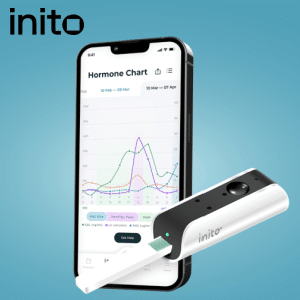Success Strategies for Pumping Breastmilk and Building a Stash
Description
Breast milk truly is liquid gold. Your body makes the perfect food for your baby, and pumping lets you give them that milk even when you are not there. Whether you plan to pump occasionally, pump at work after maternity leave, or build a freezer stash, this episode will walk you through how to make pumping easier, more efficient, and less stressful. We’ll cover choosing and using a pump, building and storing your milk supply, navigating pumping at work, and keeping your supply steady.
Listen Now
This episode is made possible with support from our sponsors. I appreciate your support for the brands that help power this podcast.
 </figure>
</figure>10% off Oscha Slings with the code PREGNANCYPODCAST. From the newborn stage through toddlerhood, Oscha Slings are the most beautiful and comfortable solution for carrying your baby.
 </figure>
</figure>The VTech Advanced HQ Max is built for parents who want an easy-to-use, secure monitor without the need for Wi-Fi or apps. With a large 7” screen and crisp, real-time video the Advanced HQ Max is perfect if you want private, no-fuss monitoring with premium features. As the #1 Baby Monitor Brand in North America, VTech is trusted by millions of families. Click here to check out the Advanced HQ Max.
 </figure>
</figure>Inito is the first at-home fertility monitor that tracks four key fertility hormones (estrogen, LH, PdG, and FSH) all on a single test strip. Inito is 96% as accurate as a blood test, without the cost, wait time, or hassle of going to a lab. The Inito Starter Pack is available for just $89 with the code PREGNANCYPODCAST.
Become a Pregnancy Podcast Premium member or log in to access all articles and episodes ad-free.
<form action="https://pregnancypodcast.com/login/" class="mepr-form" id="mepr_loginform" method="post" name="mepr_loginform">
<label for="user_login">Username or E-mail</label>
<input id="user_login" name="log" type="text" value="" />
<label for="user_pass">Password</label>
<input id="user_pass" name="pwd" type="password" value="" />
<button class="button mp-hide-pw hide-if-no-js" type="button">
</button>
<label><input id="rememberme" name="rememberme" type="checkbox" value="forever" /> Remember Me</label>
<input class="button-primary mepr-share-button " id="wp-submit" name="wp-submit" type="submit" value="Log In" />
<input name="redirect_to" type="hidden" value="/feed/" />
<input name="mepr_process_login_form" type="hidden" value="true" />
<input name="mepr_is_login_page" type="hidden" value="false" />
</form>
Article and Resources
I support the decisions you make for you and your baby when it comes to feeding. My goal is to provide accurate, evidence-based information and support to help you succeed. You can find all of the breastfeeding resources, episodes, and articles here.
How Long Should Your Baby Get Breastmilk?
The American Academy of Pediatrics’ recommendation is consistent with the World Health Organization and many pediatric associations worldwide. You should exclusively breastfeed your baby for the first six months. At around six months, you should introduce your baby to solid foods while continuing to breastfeed for up to two years and beyond.
Although you introduce solid foods around six months, it takes time for babies to increase consumption of other foods and reduce consumption of breastmilk or formula. For the first year of your baby’s life, they depend on either breastmilk or infant formula as their primary nutrition source.
Understand Why Pumping Matters
If you are breastfeeding without using formula, it can feel like you are constantly tethered to your baby. Pumping gives you the flexibility for your baby to have your milk even when you are not there. This might mean getting out for a few hours to run errands, enjoy time with friends, or return to work. Some parents choose to pump exclusively instead of breastfeeding directly. Pumping can also help you build a freezer stash for future use. In some cases, you can continue feeding your baby breast milk from that supply even after you stop breastfeeding.
Protect Your Milk Supply While Pumping
There is one key principle you need to keep in mind, and that is that milk production works on a demand and supply system. Every time milk is removed, whether by nursing or pumping, your body gets the signal to keep producing at that time. This can be used both to maintain and increase your supply. While it may be appealing to have someone else give your baby a bottle, pumping is most valuable when you genuinely need to be apart from your baby, not to replace a feeding you could do yourself. If your baby gets a bottle at noon, aim to pump around noon to protect your supply. Skipping sessions tells your body that less milk is needed, which will reduce production.
How Much Milk Will Your Baby Need?
When you pump, it is easy to focus on the amount you collect, since you can see it in the bottle. By the end of the first week after birth, most parents produce between 19 and 30 ounces (550 and 875 mL) of milk each day. The average feeding is about 3–5 ounces (90–150 mL), and this amount tends to stay pretty consistent through the first six months. These numbers are specific to breast milk. Because formula is harder to digest and its nutrients are absorbed less efficiently, babies may take larger quantities when fed formula.
Recognize Normal Changes in Pumped Milk
As you start pumping and storing milk, you may notice changes in color, consistency, or smell. Your diet usually causes these variations. They are normal, so there is no need to overanalyze them. You will also notice that breastmilk in a bottle or storage bag will separate into layers as it cools. Breast milk is naturally high in fat, which





